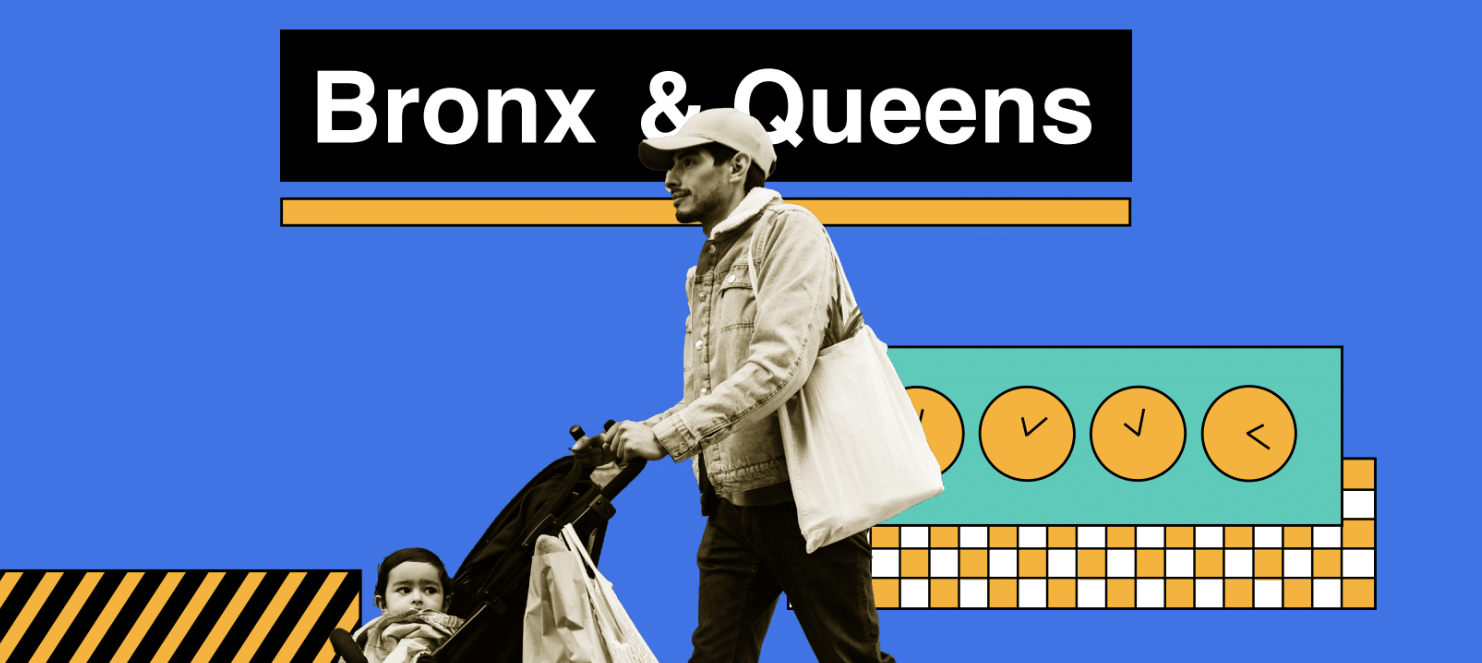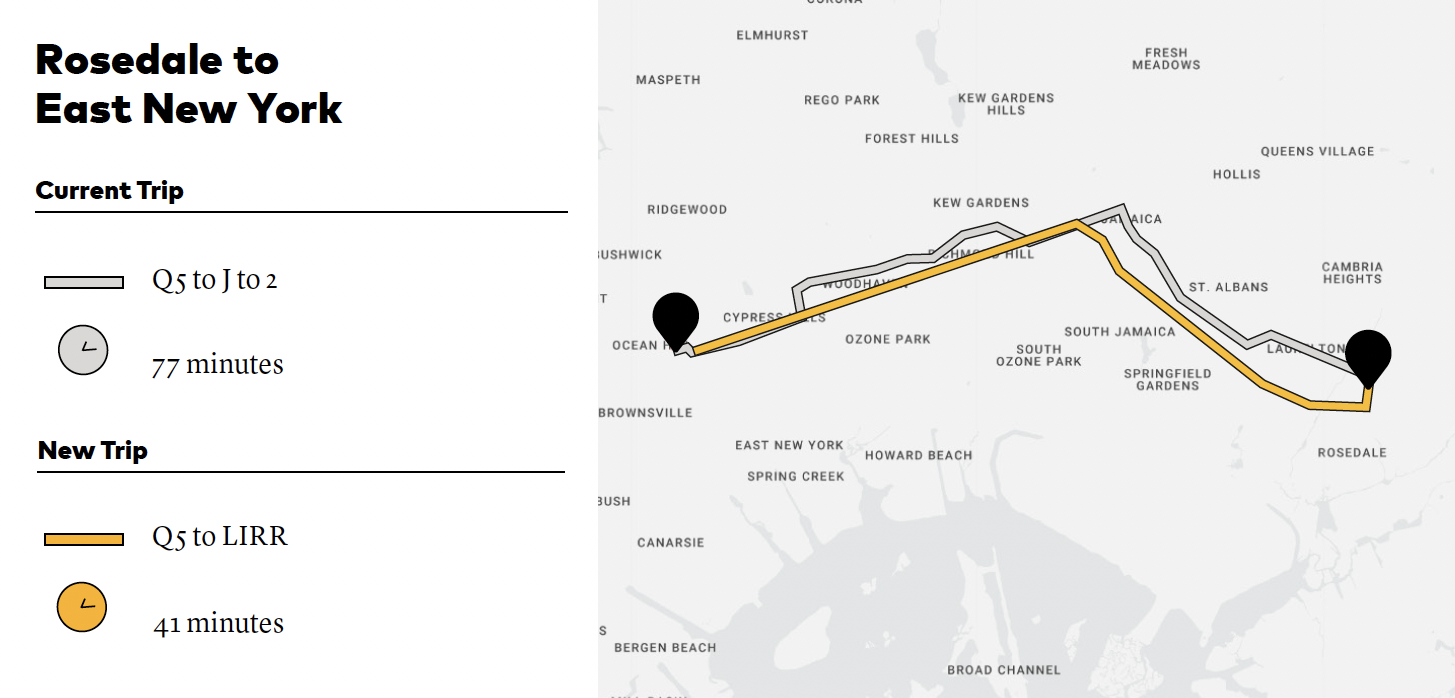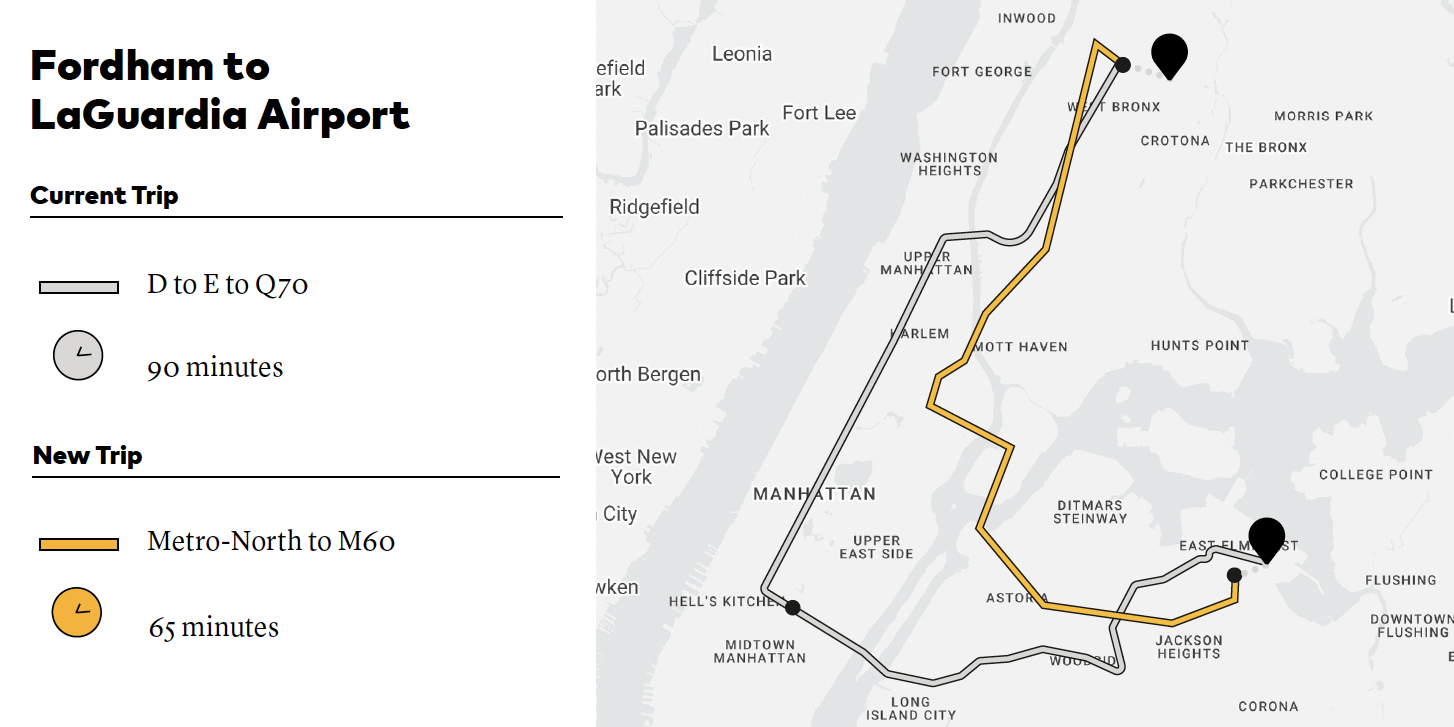
In a new report, “Renewing the New York Railroads,” TransitCenter analyzes the potential benefits of operating Metro-North and the Long Island Rail Road more like the subway within New York City’s boundaries, with affordable fares and more frequent service.
Given the extra capacity created by the impending opening of Grand Central Madison and changing commute patterns that have resulted in an MTA ridership slump, there’s unprecedented opportunity to go big on operational changes that would attract new riders and make the system more equitable, accessible, and relevant for all New Yorkers.
“Renewing the New York Railroads” reveals that the current regime of expensive fares and peak-oriented schedules on MetroNorth and LIRR is a big drag on opportunity in the NY Metro area.
In the Bronx and Queens, residents who cannot afford to pay more than $5 for a one-way transit trip can access only 54% of the jobs that people without a budget constraint can reach in an hour.
As of September 2021, the average white resident in the New York metropolitan area could access nearly a million potential jobs within 45 minutes using public transit—85% more than the average Black resident, who could access only 539,000 potential jobs.
These separate and unequal systems also exact an enormous time penalty on New Yorkers who must travel long distances but cannot afford a fare on Metro North or LIRR. A subway and bus trip between Midtown Manhattan and many neighborhoods in East and Southeast Queens typically takes more than 90 minutes, when an LIRR ride could easily halve travel times.
“Renewing the New York Railroads” finds that lowering LIRR and MNR fares to $2.75 within city limits would allow New Yorkers to access more than a million potential jobs in an hour, creating more pathways out of poverty and into well-paying employment.
Increasing access to the railroads would shorten commute times by as much as half, giving hundreds of thousands of New Yorkers hours back of their life every week.
For example, a healthcare worker who commutes five days a week from Brooklyn to Queens on the bus and subway could save 36 minutes each way if she could afford a trip on the LIRR instead – a cumulative savings of six hours per week!

A worker at LaGuardia Airport who commutes five days a week from the Bronx to Queens on the subway and bus could save 25 minutes each day if he could afford a trip on MetroNorth – a cumulative savings of more than four hours per week!

The report also found that fare reductions and all-day service would grow ridership at rail stations within the city by 88 to 146 percent, translating to systemwide ridership increases on Metro-North of 5-8 percent, and LIRR of up to 22 percent.
These changes would have a ridership impact equivalent to multiple megaprojects for a fraction of the cost. For example, Grand Central Madison, which will bring LIRR service to Manhattan’s east side, is only predicted to grow LIRR ridership by 4%, at a total cost of $11.2 billion. By contrast, the New York City Comptroller’s office has estimated that lowering the commuter rail fare to $2.75 within NYC would represent merely $50 million in forgone revenue annually. Additional capital investment would likely be required to address bottlenecks and lengthen platforms and make ADA improvements to some rail stations.
Because transit ridership recovery has been so sluggish and federal COVID relief funding is running dry, the MTA has said it will face budget shortfalls of $600 million in 2023 and $1.2 billion in 2024. This crisis demands prompt action from decisionmakers. But the magnitude of the ridership slump and the durability of the shift to remote work is precisely why we need fresh thinking and strategies to bring in new customers and cater to changing travel patterns. Now is the time, and this report charts a path forward.